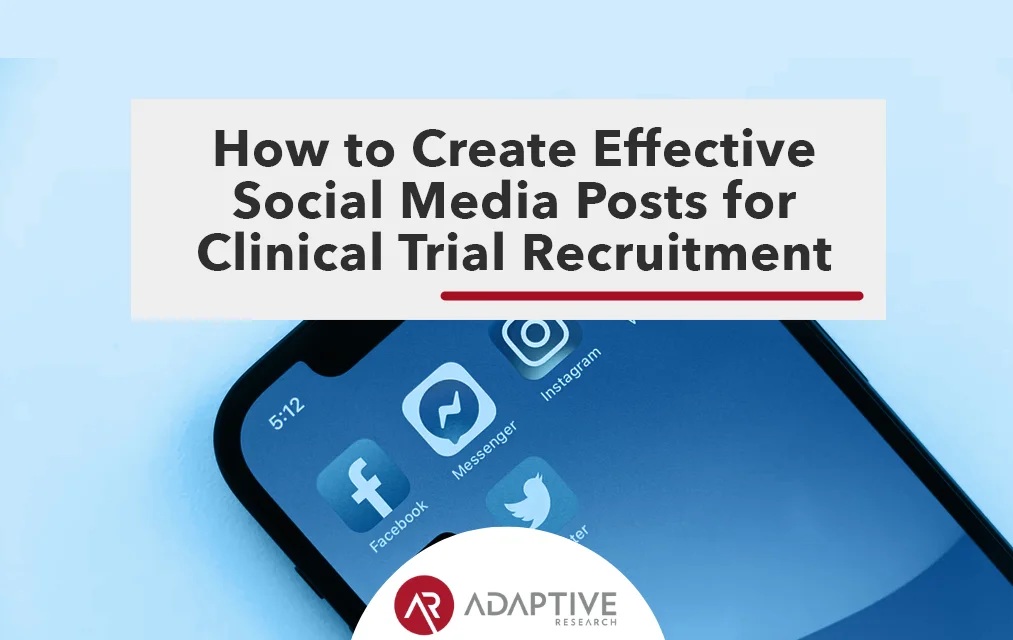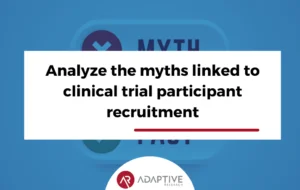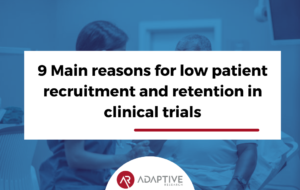Social media is a great resource for clinical trial recruitment, but it takes more than just posting information to drive recruitment. To maximize recruitment through social media, the social media manager needs to use certain best practices. These tips for effective social media recruitment will help you reach more potential participants and drive clinical trial enrollment.
1) Be Relevant
Your posts should be targeted at the people you want to see them. For instance, if your research is on children’s diabetes, post about things that affect this community, such as local news and events related to diabetes. If your research is on adults’ fertility, share stories about infertility and family planning.
You should also make an effort to learn what types of posts are most popular with your targeted followers—you can usually see at least a rough estimate of how many people have liked or commented on each one. If something isn’t getting much interest, consider changing things up before trying it again.
2) Use Images
Posting information without including an image makes your message less memorable and reduces sharing. Social media audiences rely heavily on visuals such as photos and videos rather than text so it’s important not to underestimate their power. One study found that 80% of people remember what they both see (as images) and read (as text), compared to only 20% of people remembering text.
There’s no magic formula that works on every social media platform, so you’ll want to do some experimenting and see what kinds of posts get the highest rates. Photos with faces generally perform better than those without as they show there are real people behind a study—if you can’t include actual photos, stick to graphics like infographics or logos for companies involved in your trial.
3) Be Consistent
Recruitment is time-intensive work, so be sure to have several postings scheduled over the week at different times and days. This will ensure your posts are reaching more potential participants throughout the week. It’s also important to maintain consistency in what you post—it’s hard for users to remember why they follow you if you’re all over the place with your content. Pick topics based on your research aims, create some images ahead of time, plan out when these messages will go live (and schedule them accordingly), and then stick to it!
4) Respond To Questions and Comments
Social media is a great place to interact with participants and let them know you are open to their questions and feedback. It shows that you value their opinions, so they’ll be more likely to share your posts. If someone leaves a question on one of your posts, respond as soon as possible! You can post updates, milestones, and information about what is taking place in the study. It is important to keep followers engaged by actively participating in conversations on social networking sites.
5) Keep Learning
As social media changes over time, change your approach to match. Keep up-to-date on the latest features, algorithms, and strategies for each network you’re using (Facebook, Twitter, etc.). The more time you spend learning about these new trends and tools, the better your posts will be.
How to Find Prospects
When you’re looking online to find people who might be interested in your research, keep track of any details you find about them that will help you know how to reach out and connect with the people on social media. You’ll need to tailor your messages as specifically as possible so they feel like something a friend would post instead of an advertisement. Make sure you only target the demographics most likely to be interested in taking part in your study—if someone isn’t a good fit, they probably won’t respond or click on the link you provide, so don’t waste time recruiting people who aren’t going to be truly motivated by what you have to offer.
There are a few different places to search for social media contacts who might be interested in participating, and you should consider each one before moving on to the next step. The best place to start is with your own social media presence, as well as those of colleagues and peers who will sometimes post about research studies they’ve been involved with or interested in.
Following trial hashtags can also help you find potential participants through Twitter – these often pop up from time to time if someone feels so strongly about a study that they want people to know more about it or feel compelled to share a link. Other good sources include Facebook groups related to certain diseases or conditions that could be affected by your clinical trial – even there isn’t a group dedicated specifically to your study, you might be able to find one that discusses similar issues surrounding a certain affliction.
Once you’ve gathered a list of potential participants, use the information about them that you found earlier to personalize your messages and draft posts for social media. You’ll want to include a link that takes people to a page with more details about what they’ll have to do in order to take part in your clinical trial—it’s important to be clear from the start about what’s required so they don’t sign up if they aren’t comfortable completing all of the steps.
The End Game
It doesn’t take much time to set up a social media page, but it can produce a great deal of interest in your clinical trial provided that you have the patience to stick with it and do everything necessary to make sure people are actually seeing your posts. Social media certainly has a lot going for it—all you need is a little commitment from those involved as well as yourself throughout the course of the study.
Adaptive Research is a clinical trial platform that brings together all the tools and resources necessary to run a clinical trial. Learn more about our team here.






